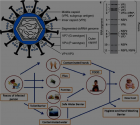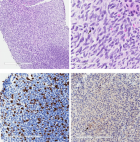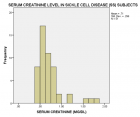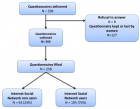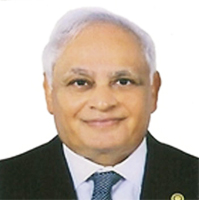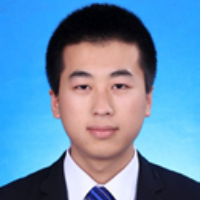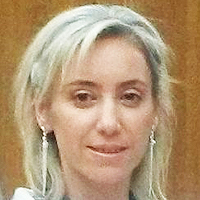Table of Contents
3-Dimensional Versus 2-Dimensional Comparison of Knee Valgus Collapse during Vertical Jump: Clinical Implications for ACL Risk of Injury Assessment
Published on: 21st March, 2017
OCLC Number/Unique Identifier: 7286358320
Time-efficient screening of lower extremity biomechanics to identify potential injurious movement patterns is crucial within athletic medicine settings. When considering biomechanical risk factors for anterior cruciate ligament injuries, several screening tests have been used to assess dynamic knee valgus. Current methods involving 3-dimensional motion capture systems are considered gold standard for such assessment; however, these methods are time consuming and require expensive materials. This study investigated the use of 2-dimentional kinematic evaluation during a standardized vertical jump athletic assessment to screen for potential lower extremity risk of injury. 50 collegiate athletes, 25 male and 25 female, from various sports participated in the study. The vertical jump was chosen because it is a common performance evaluation test that is regularly performed several times a year, providing consistent opportunities for screening while not creating additional obligations for the student athletes. Results showed that the 2-dimentional evaluation method had strong correlations (P<0.0001) with the gold standard 3-dimensional evaluation, suggesting that an accelerated 2-dimentional screening process can be used as a first step to screen for potential injurious lower extremity movement patterns.
An Unusual Cause of Anterolateral Ankle Pain and Snapping
Published on: 20th March, 2017
OCLC Number/Unique Identifier: 7286355060
Most patients with anterolateral ankle pain report some history of trauma as the precipitating event. In the majority of cases of anterolateral ankle pain with no history of trauma the cause is proliferative synovitis, especially in the area of the anteroinferior tibiofibular ligament [1,2]. Our case report is about a patient with anterolateral ankle pain and snapping, with no history of trauma, caused by an abnormal peroneal tertius muscle belly. We have found only one similar case reported in the literature [3]. That particular case was treated with arthroscopic resection, which requires specialist arthroscopic skills. In our case we have done an open resection, which can be safely performed by most surgeons.
The Utility of Acupuncture in Sports Medicine: A Review of the Recent Literature
Published on: 17th March, 2017
OCLC Number/Unique Identifier: 7286426515
Introduction: Acupuncture is a practice that has been used to treat multiple medical conditions for thousands of years and is one of the most popular alternative treatments applied in Western medical practice. Acupuncture is a modality that has significant potential for further integration into the treatment of sports medicine conditions.
Methodology: The search strategy in this review included electronic databases-MEDLINE, Cochrane Library, PubMed, Web of Science, and Science Direct. Randomized controlled trials and systematic reviews were preferred for article inclusion, but other study types were included when the number or quality of evidence was limited.
Results: Back pain, neck pain, shoulder pain, and knee pain related to OA tend to respond well to acupuncture treatment. There is evidence to support the use of acupuncture for the short-term treatment of plantar fasciitis, although long-term efficacy data is lacking. Acupuncture may be a useful treatment modality for epicondylitis and Achilles tendinopathy, but the current data is limited. While acupuncture may improve athletic performance and prevent Delayed-Onset Muscle Soreness (DOMS) symptoms, there is little current evidence to support this use.
Conclusion: Further studies are needed to assess the usefulness of acupuncture in sports medicine. However, there is good evidence for the current use of acupuncture in treatment of multiple pain conditions.
Parents Take-On Concussion: Advances in Sideline Research and Culture in Youth Sports
Published on: 16th March, 2017
OCLC Number/Unique Identifier: 7286354252
Identifying concussion and initiating removal from play is challenging for even the most diligent youth sports organizations. Empowering parents to implement removal from play protocols and sideline testing may be the most practical plan at community levels to protect young athletes. We developed paradigms for community-based youth sports teams that incorporated both standard concussion protocols and research investigations. The research studies were designed to determine how sideline tests of vision, cognition and balance augment the capacity for parents and other responsible adults to identify youth athletes with concussion in ice hockey, football, lacrosse and cheerleading. Research-based sideline tests were performed at pre-season baseline sessions and during the season at the time of injury or as soon as symptoms were recognized by trained volunteer parent team testers. The combination of standard concussion protocols and research studies were performed for 510 athletes, aged 5-17 years, over 2.5 years through 5 athletic seasons. To implement the protocols and studies, approximately 80 student volunteers and parents were educated and trained on early concussion recognition and on baseline and sideline test administration. Over 80% of parent-identified head injuries were physician-confirmed concussions. Of the sideline tests performed, over two-thirds were administered within 24 hours of injury; the rest were performed within an average of 2.6 days post-injury since some athletes had delayed development of symptoms. Removal from play guidelines and standard concussion evaluation protocols were maintained in the context of the sideline testing research investigations. Based on this observational study, parents of youth athletes can be successfully empowered to perform rapid sideline tests in the context of existing concussion protocols. Implementation of objective testing may improve concussion identification and shift the culture of advocacy and responsibility towards parent groups to promote safety of young athletes. Ongoing investigations will further examine the impact of these programs on concussion management in youth sports.
Retrospective Analysis of Non-Contact ACL Injury Risk: A Case Series Review of Elite Female Athletes
Published on: 6th February, 2017
OCLC Number/Unique Identifier: 7286350760
Background: Literature on ACL injury is limited when assessing for the presence and interaction of multiple risk factors simultaneously. Identifying risk factor interaction may increase the impact of prevention programmes to target ACL injury reduction. The aim of this study was to retrospectively assess ACL injured female athletes to identify which modifiable and non-modifiable risk factors were present at the time of injury.
Method: Seventeen female athletes who had sustained a non-contact ACL injury were interviewed retrospectively to assess for the presence of reported risk factors for ACL injury.
Result: This retrospective analysis ACL injury cases highlighted a number of factors which were present with high frequency across this group of cases. All had non-contact ACL injury occurring during cutting or landing, which suggests a predisposing deficit in neuromuscular control. This poor neuromuscular control could be exacerbated by the presence of fatigue identified within the cohort. This poor control could be further influenced by the fact a majority of athletes had another significant injury in the 12 weeks prior to ACL injury. The restriction to training could have either decreased fatigue resistance, or potentially changed their movement pattern because of the method of injury management undertaken.
Conclusion: This case series provides insight into the interaction of risk factors for ACL injury in sportswomen, with the presence of another injury disrupting training, decreasing the athletes work capacity and fatigue resistance, being compounded perceived or actually elevated levels of fatigue, leading to the potential for abhorrent movement patterns and increased injury risk.

HSPI: We're glad you're here. Please click "create a new Query" if you are a new visitor to our website and need further information from us.
If you are already a member of our network and need to keep track of any developments regarding a question you have already submitted, click "take me to my Query."









